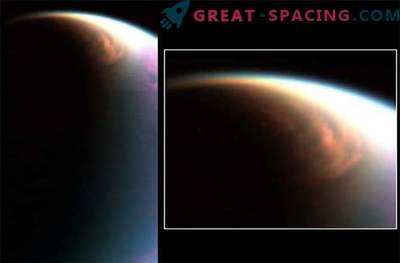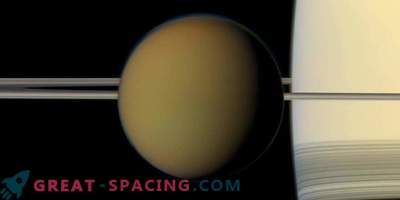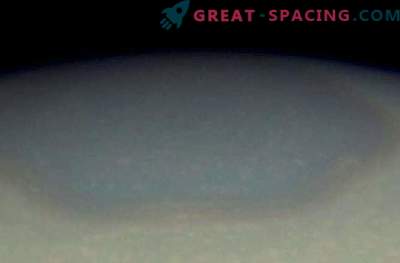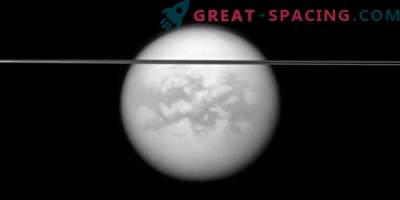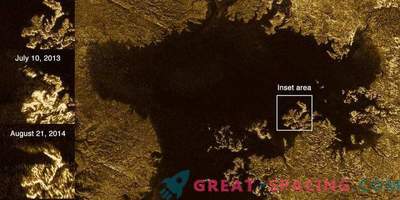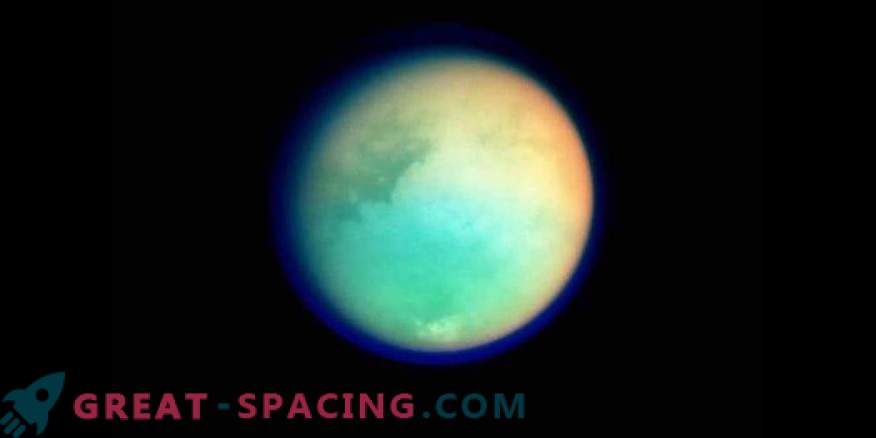
Admire the fact that not every day you can meet. Before you shine fresh rain on the surface of another world. In a new study, the data from the Cassini spacecraft demonstrated a large reflective formation of the satellite Saturn Titan near the north pole. Information received in June 2016.
During the first 13 years of research into the Saturn system, the Cassini apparatus was able to find the numerous lakes and seas of liquid hydrocarbons on the cold surface of Titan. However, the new bright spot, covering 120000 km 2, does not act as something ordinary. The researchers reported that the feature disappeared from the observations too quickly, which means it could be a large puddle of methane rain, which then evaporated.
Probable precipitation indicates that by the middle of 2016, summer weather arrived in the northern hemisphere of Titan. Interestingly, this is a bit later than predicted by climate models. Scientists plan to figure out what could cause a delay.
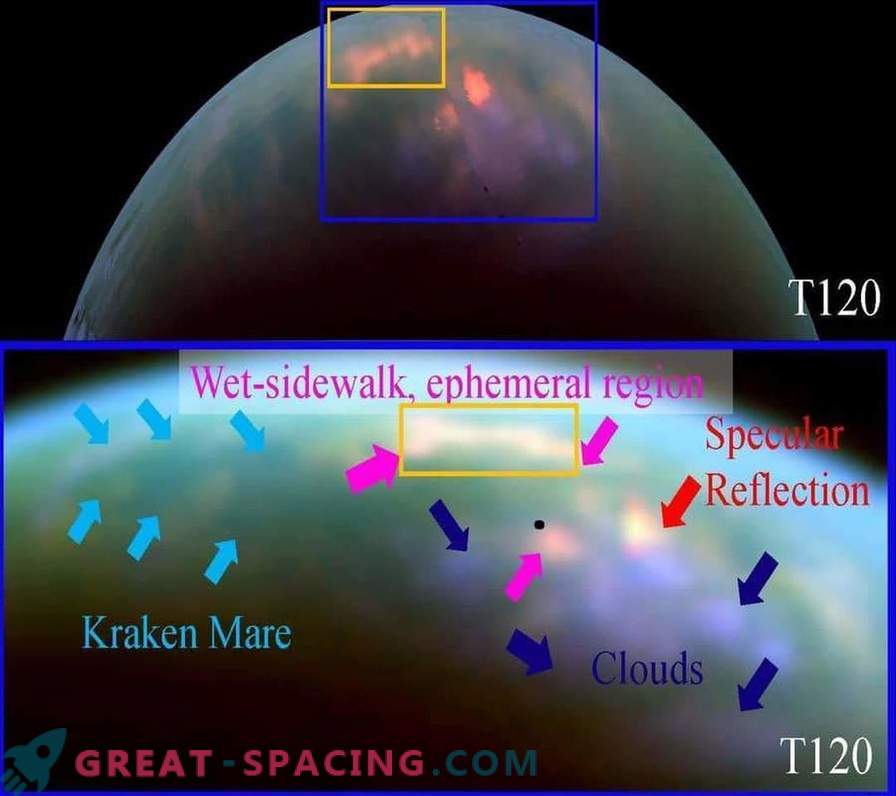
Titan's North Pole (Saturn's satellite) is displayed by a visual and infrared mapping spectrometer aboard NASA's Cassini spacecraft. In the yellow frame is marked “wet” area, hinting at the change of seasons and rain. The blue area shows the extended region, and the black dot indicates Titan's north pole. Saturn and the satellite system take 29.5 Earth years to perform one orbit around the Sun. Therefore, each season accounts for almost 7.5 years. The Cassini spacecraft arrived at the system in mid-2004. It was a period of southern summer, so it was possible to notice clouds and precipitation in the southern hemisphere of Titan.
Titan is the only world, except the Earth, on which stable formations of fluid are seen. However, the weather satellite system is different from ours, because rain, rivers and seas are represented by liquid hydrocarbons, not water.
Cassini was actively studying the planet, rings and moons until September 2017, when he deliberately plunged into the atmosphere of Saturn after fuel consumption. Deadly fall is a planned decision, because it ensures that the device does not infect Titan and Enceladus with terrestrial bacteria.
The spacecraft received images of the brilliance of precipitation using a spectrometer for visual and infrared mapping, capable of peering through Titan's thick atmospheric mist.




